#after david hockney
Explore tagged Tumblr posts
Text


and you’ll never guess which one came first
#do the Hockney painting (which is a self portrait btw) was done like 15 years after evangelion came out#so it is extremely possible that Hockney has seen the meme#david hockney
0 notes
Text
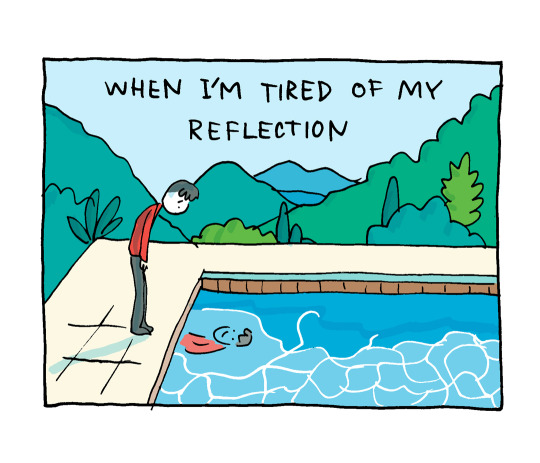
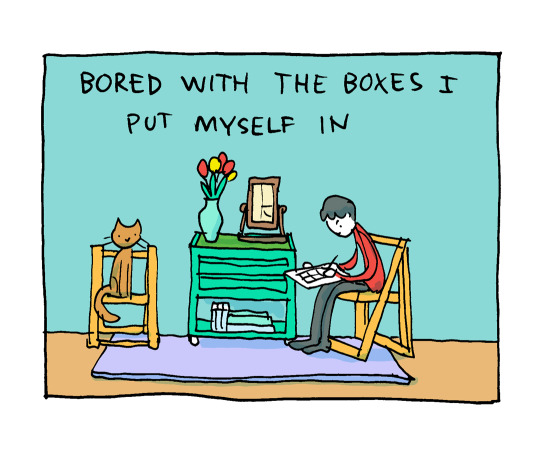
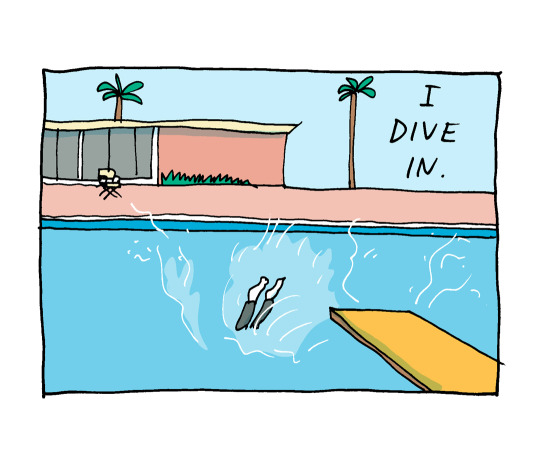
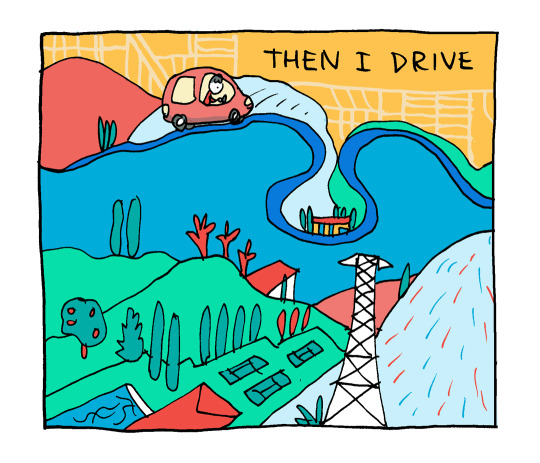
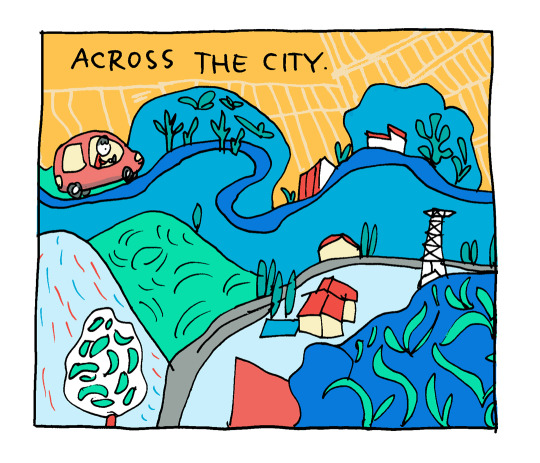
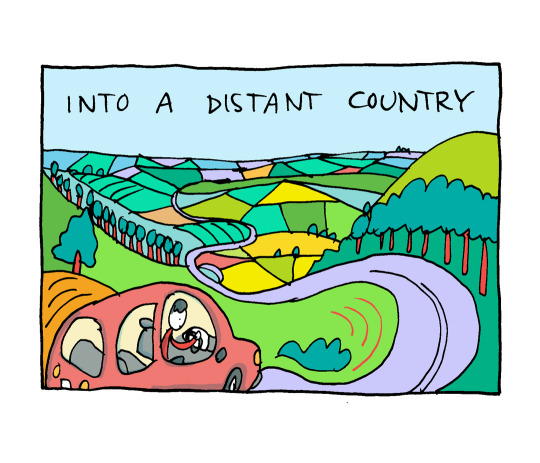
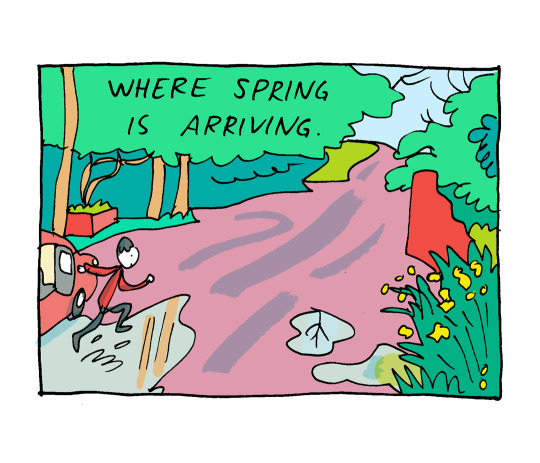
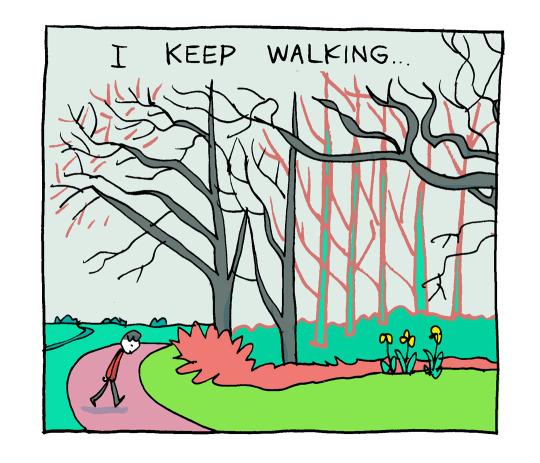
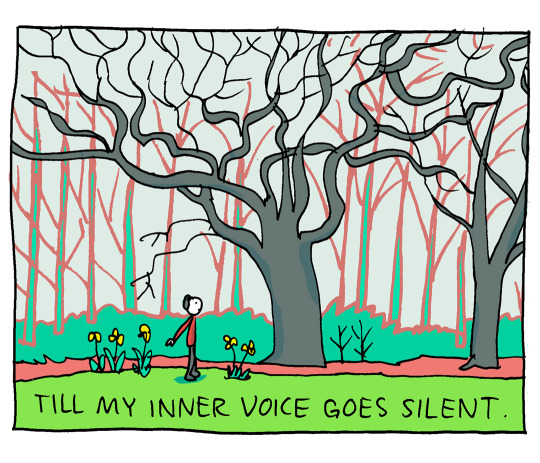
A Smaller Me (After David Hockney)
415 notes
·
View notes
Text


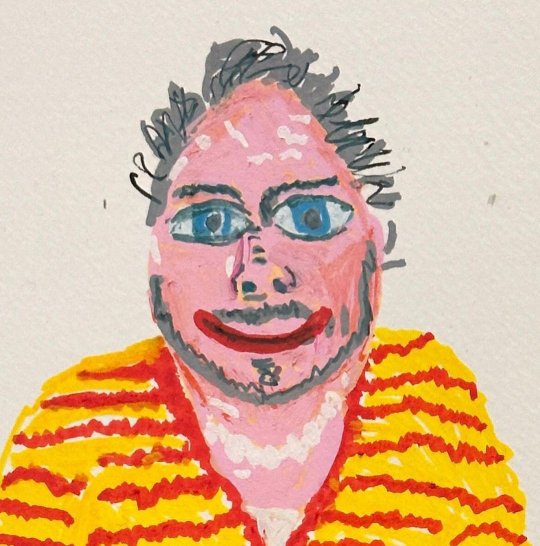
Harry's DMs with comedian Joe Lycett after he joked about painting a portrait of Harry, following the Vogue article of Harry getting his portrait painted by artist David Hockney. (5 August 2023)
x/x
993 notes
·
View notes
Text

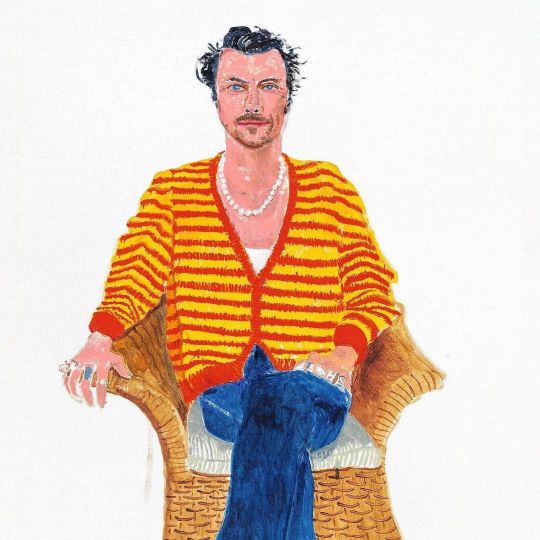
voguemagazine “David Hockney has been reinventing the way we look at the world for decades,” says Harry Styles. “It was a complete privilege to be painted by him.” Late last May, Styles traveled to Hockney’s light-filled studio in Normandy and stationed himself on a cane chair, ready to become the esteemed artist’s latest subject. Over two days, Hockney worked to capture the exact hues of red and yellow in Styles’s striped cardigan, the indigo of his jeans, the string of pearls at his neck—not to mention the unmistakable tousled fringe of one of the world’s biggest pop stars.
The unveiling of the portrait kicks off the second iteration of the National Portrait Gallery’s Hockney exhibition “Drawing From Life,” which first opened in February 2020, only to close weeks later due to the pandemic. With the addition of a new room of pictures charting Hockney’s creative impulses throughout lockdown, the show returns on November 2—a few months after a refurbishment of the entire museum—with Styles’s portrait as its crown jewel. Head to the link in bio to learn more.
492 notes
·
View notes
Text

Robert Mapplethorpe, one of the most influential photographers of the 20th century, was known for his provocative and intimate portrayal of the human form, capturing both beauty and controversy. Born on November 4, 1946, Mapplethorpe rose to prominence in the 1970s and 1980s, largely due to his unapologetic depictions of both celebrity culture and subcultures of New York City, particularly his intimate work with musicians and artists like Patti Smith. His friendship with Smith was integral to his life and art, as she inspired many of his photographs, becoming a muse to his lens.
Mapplethorpe’s work often explored themes of sexuality, identity, and the fine line between art and obscenity. His art challenged social norms and spurred debates about artistic freedom and censorship, especially after his posthumous exhibition at the Corcoran Gallery of Art in Washington, D.C. in 1989, which was controversially canceled due to its provocative content.
Mapplethorpe's photography captured moments of raw emotion, often focused on the male and female nude, portraits, and floral studies, with a unique ability to mix classical aesthetics with bold, contemporary subjects. His photographic legacy was defined by his keen sense of composition and mastery of lighting. While his life was tragically cut short in 1989 due to complications from AIDS, his impact on art, culture, and the LGBTQ+ community remains indelible.
In addition to his work with Patti Smith, Mapplethorpe's connections with other figures in the New York City art scene, such as Andy Warhol and David Hockney, solidified his place in the annals of cultural history, making him a key figure in the development of modern photography.
Source: Heritage Through Time
35 notes
·
View notes
Text
queer signalling: louis and harry living their beautiful queer lives, collected by me
since we must take note of our fellow queers when they signal that they are very much one of us, despite being closeted. since i've had a very very queer few years thanks to them, thanks to their signalling, thanks to them being brave.
(!! this list isn't exhaustive, and if i've forgotten your favorite, by all means let me know. there's always room for another edition. it's been a while since i made a compilation and felt there was a need of a new one on my blog. this one goes a few years back, since my last one dates from 2021 :'o. so yeah. here we go.)
harry in my policeman, playing a closeted queer man, based on the book that's long been one of his favorites. lauded by the director and co-stars for how well he portrayed this character, how well he understood.
harry wearing a green flower on his chest for the mp premiere, placing himself (once again) in the same line of history as oscar wilde.

louis's green flowers on his initial 28clothing jersey at the first afhf, which includes bonus roses and 28s all around
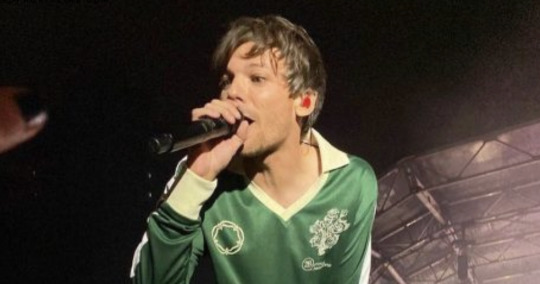
the entire late night talking mv bc!!!!!
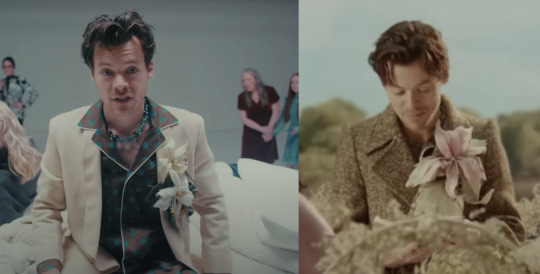
louis's rainbow stage lights during sibwawc. he really did that. every single night.

the entire dazed magazine happening. “I’ve always tried to compartmentalise my personal life and my working life,” he explains. / “I have unlocked an ability to be myself completely, unapologetically,” he says with conviction." / “I think through my own sense of self and personal journey, I am realising that happiness isn’t this kind of end state.”

louis's gay exit songs: most notably 'ever fallen in love (with someone you shouldn't've)'
harry flirting with stanley tucci
louis and his gay ass tank tops !!! we must point it out !!!!!!
all along
harry kissing a pride flag during harry's house ono in nyc
rainbow flare during the btm mv
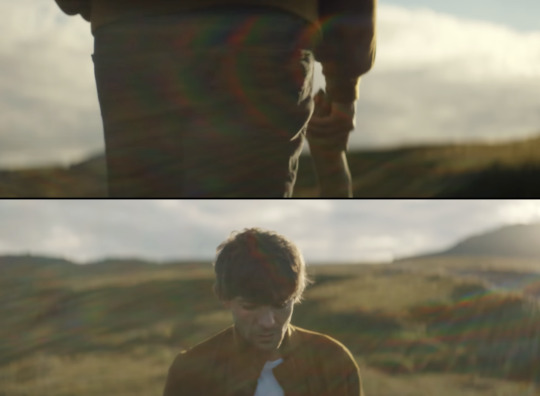
harry being gifted a mask of his own face at munich n2, which prompted him to say that he feels like he's wearing a mask sometimes
28 in a triangle for 28clothing!!!!!!!!
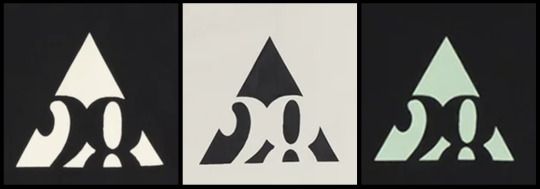
kit connor soft launching 28 clothing. a young actor starring in a queer coming-of-age series, who was forced to come out after being accused of queerbaiting. he was the first one, besides louis, to wear 28clothing
harry's grammy's speech "people like me" (which ppl sadly misunderstood), echoing what he's been saying on tour for years. this doesn't happen to people like him. if they only knew, right?
harry's freddie-inspired outfit for the grammy carpet (which also brought back his theme for clown/jester fits, like harryween 2021 n2. wonder why)
louis's merch graphic where a boy is trying to smash a glass ceiling
harry posing for david hockney, actual living legend, gay artist of the ages. "Styles seems to know how lucky he is, adding, with a tinge of disbelief: “I’m in awe of the man with enough one-liners for a lifetime.” As to what those one-liners might be? Styles and Hockney’s mutual silence on that question suggests that what happens in the studio, stays in the studio."
louis having suspicious visuals during back to you, the only visuals of that type on tour
harry's 2022 harryween outfit: dressed as danny (literally. he did that. he went grease on us.) but wearing sandy's jacket
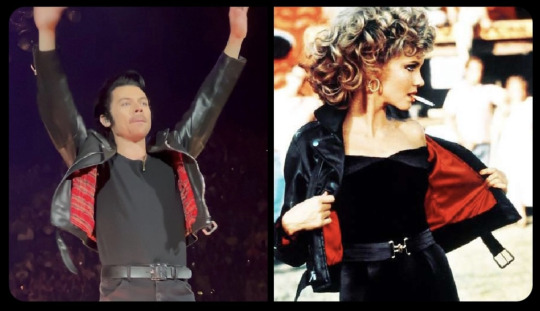
louis at barricade aka held safely in the arms of strong security personnel
harry singing man, i feel like a woman and still the one with shania twain. while wearing a rainbow discoball jumpsuit (parallel with kacey musgraves wearing a rainbow dress to sing it with him years ago.)
louis's gay ass merch for the away from home festival
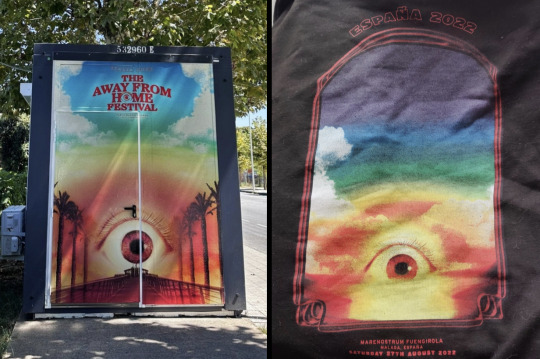
harry dressed in nina ricci by harris reed, an explicitly gender-fluid line. "At 18 I found myself living in london creating ruffle blouses, corsets, fabric flowers and flares from my kitchen floor (...). My creations at the time were met with nothing but criticism for being “too feminine” or “costume”, teachers said I should focus on “menswear” or “womenswear”. l remember it really wasn’t until I started dressing for myself and who I was that it all clicked. @harrystyles was my first ever client who embraced the fun, fluid and expressive clothing I was creating."
continuous bluegreening. to name a few: harry's werchter fit, all this time lights, satellite caps in two colors only, louis's smiley flickering bluegreen on tour in 2022, the james cordon shit, louis in uncasville. enjoy this post here
harry's snl shoot unseens: him as ariel
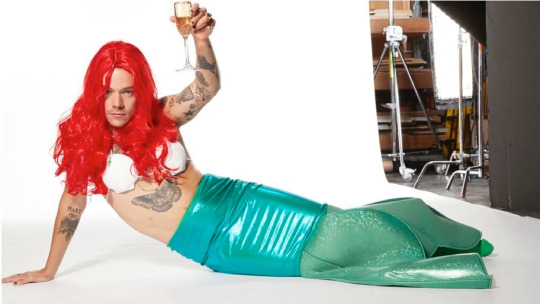
louis out in amsterdam at a gay bar
harry going to the women's only swimming pond (on a day it was open for men, but this is important to me okay)
harry's use of orchids in his visuals during 'she' during love on tour '23
the 'hairy mermaid' tour visuals
harry as a mermaid during the mfasr mv. as a supreme physical manifestation of harry as the mermaid he truly is inside. but in his true form he gets chopped up and consumed. literally
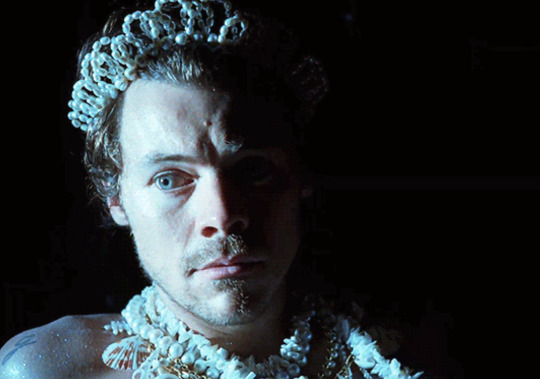
as it was mv and its parallels with the matrix, hints to harry as the woman with the red dress.
louis jumping up on barricade against the one spot where a pride flag was draped over it

oh yeah that exact same thing happened in 2022 too
harry forming a skirt with a pride flag in brasil after his pants ripped
that gay ass denim getup with the fur collar?? while wearing the fucking peace ring????
harry and phoebe breaking gender norms in the tpwk mv dance. no i'm not over it yet shut up

louis wearing a basquiat t-shirt, another famously queer artist joining the ranks
harry bought an actual genuine basquiat. flex
harry dressed in skirts for gucci
"happy pride! happy pride! 'tis the season! can you tell i'm relaxed?"
"isn't all of this sparkly bi music?"
satellite mv rainbow planet tshirt
louis's bigger than me promo where he's literally george michael like??? IM SORRY???????
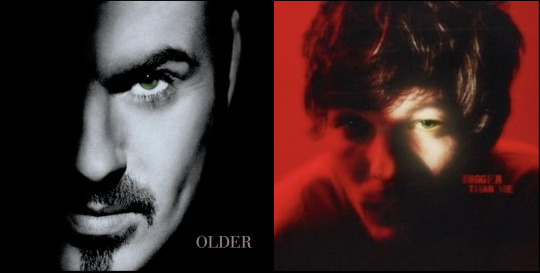
harry kissing lewis capaldi at the brits
harry kissing nick kroll at the dwd premiere. lol
and... harry as friend of D O R O T H Y. sang over the rainbow. we all cried. especially me at this clip of harry glancing in relief at his band after over the rainbow.

#queer signalling#my posts#long post#anyways............. hmu if you have more bc i know there's more that i've forgotten but i didn't want to wait#but these were my personal highlights#this is for me more than anyone i know. i don't really know if anyone's really waiting on this#but i personally have been feeling like i gloss over a lot#and forget a lot#and minimise a lot for fear of making a big thing out of something small#but... then i make big things into something small.#which i hate#going through my archive just shows how fast an event passes by and i just stopped talking about it#ive complained about this many a time i know#anygays#for whoever wants to come scream with me <3#also i have left out some events that were too easily deniable and i didn't want to clutter the post#since what's actual tangibly real and straight from them is so insane already#also that gif is how i feel rn.#how i often feel tbh#i want to be braver again
130 notes
·
View notes
Text
THIS DAY IN GAY HISTORY
based on: The White Crane Institute's 'Gay Wisdom', Gay Birthdays, Gay For Today, Famous GLBT, glbt-Gay Encylopedia, Today in Gay History, Wikipedia, and more … January 8

or



In Memoriam of Cecchino Bracci - Hockney, David. Museo Nacional Thyssen-Bornemisza
1544 – Italy: Cecchino de Bracci, a teenage pupil of Michelangelo (and nephew and lover of Luigi del Riccio) dies. His death inspires Michelangelo to write 48 funeral epigrams.


1860 – The American author and art collector Edward Perry Warren , better known as Ned, was born on this date (d.1928). Independently wealthy, he left his native America and spent most of his life in England with his lover of 50 years, John Marshall, who he had met at Oxford in 1884 and who he called "Puppy." The two set up house together at Lewes House, a large residence in Lewes, East Sussex where they became the centre of a circle of like-minded men interested in art and antiquities. Under the pseudonym "Arthur Lyon Raile," he wrote a three-volume 60,000-word Defence of Uranian Love. He also wrote poetry and novels on the same subject, notably Itamos: A Volume of Poems, and A Tale of Pausanian Love, about homosexuality at Oxford.


Front and rear views
Warren is perhaps best known today as the purchaser of the Roman silver drinking vessel known as the Warren Cup, which he did not attempt to sell during his lifetime, because of its explicit depiction of homoerotic scenes; both sides show males making love. The front depicts a bearded man having anal sex with a beardless youth while a Peeping Tom looks on; the reverse shows a beardless man having anal sex with a young boy. It is now in the British Museum. The pieces he and Marshall collected during their tours of Italy and Greece later formed the bases of the classical collections of the Boston Museum, where his brother chaired the board of trustees, and the Metropolitan Museum of Art in New York.
In 1900 Edward commissioned from Auguste Rodin a version of his "The Kiss", and he particularly specified that the male genitals should be visible and pronounced. Perhaps disappointed that the very heterosexual Rodin had modeled a vague sausage and not the distinct dick required, Warren offered the sculpture as a loan to the Town of Lewes but such a fleshy monument was not considered suitable for public display (it was rejected as "too big and too nude") and it stood in Warren's coach house until his death in 1928. It is now in London's Tate Gallery.
Ned and John lived together at Lewes House in East Sussex, for a time with John’s wife, Mary. On February 15, 1928, John retired for the evening, saying that he was not feeling well. Ned gave him a kiss and joined him in bed, but John died during the night. Marshall took his last breath while Ned sat at his bedside. Servants reported that Ned's final words to the dying man were, “Goodbye, Puppy." Warren died less than one year later. Mary, John and Ned were buried in the non-Catholic cemetery in Bagni di Lucca, Italy, a town known as a spa in Etruscan and Roman times.


1864 – Prince Albert Victor, Duke of Clarence and Avondale (Albert Victor Christian Edward); (d.1892), was the eldest son of Albert Edward, Prince of Wales (later King Edward VII), and the grandson of the reigning British monarch, Queen Victoria. From the time of his birth, he was second in the line of succession to the British throne, but never became king: he died before his father and his grandmother, the Queen.
Albert Victor was known to his family, and many later biographers, as "Eddy". When young, he travelled the world extensively as a naval cadet, and as an adult he joined the British Army, but did not undertake any active military duties. After two unsuccessful courtships, he was engaged to be married to Princess Mary of Teck in late 1891. A few weeks later, he died during an influenza pandemic. Mary later married his younger brother Prince George, who became King George V in 1910.
Albert Victor's intellect, sexuality and mental health have been the subject of much speculation. Rumours linked him with the Cleveland Street scandal, which involved a homosexual brothel, but there is no conclusive evidence verifying or disproving the rumours or his sexual orientation. Some authors have argued that he was the serial killer known as Jack the Ripper, but contemporary documents show that Albert Victor could not have been in London at the time of the murders, and the claim is widely dismissed.
In July 1889, the Metropolitan Police uncovered a male brothel operated by Charles Hammond in London's Cleveland Street. Under police interrogation, the male prostitutes and pimps revealed the names of their clients, who included Lord Arthur Somerset, an Extra Equerry to the Prince of Wales. At the time, all homosexual acts between men were illegal, and the clients faced social ostracism, prosecution, and at worst, two years' imprisonment with hard labour.
The resultant Cleveland Street scandal implicated other high-ranking figures in British society, and rumours swept upper-class London of the involvement of a member of the royal family, namely Prince Albert Victor. Though none of the male prostitutes in the brothel had ever named Eddy as a client, there was a great deal of talk that seemed to suggest his frequent presence there. It is suggested that Somerset's solicitor, Arthur Newton, fabricated and spread the rumours to take the heat off his client. Letters exchanged between the Treasury Solicitor, Sir Augustus Stephenson, and his assistant, Hamilton Cuffe, make coded reference to Newton's threats to implicate Albert Victor.
The Prince of Wales intervened in the investigation; no clients were ever prosecuted and nothing against Albert Victor was proven. Although there is no conclusive evidence for or against his involvement, or that he ever visited a homosexual club or brothel, the rumours and cover-up have led some biographers to speculate that he did visit Cleveland Street, and that he was "possibly bisexual, probably homosexual". This is contested by other commentators, one of whom refers to him as "ardently heterosexual" and his involvement in the rumours as "somewhat unfair".


1910 – (Richard) Dick Cromwell was an American actor, born LeRoy Melvin Radabaugh (d.1960). His family and friends called him Roy, though he was also professionally known and signed autographs as Dick Cromwell.
Cromwell was best known for his work in Jezebel (1938) with Bette Davis and Henry Fonda and in The Lives of a Bengal Lancer (1935) where he shared top billing with Gary Cooper and Franchot Tone. The Lives of a Bengal Lancer earned Paramount Studios a nomination for Best Picture in 1935, though Mutiny on the Bounty instead took the top award at the Oscars that year.
Cromwell was born in Long Beach, California. While helping his young widowed mother to support the family with odd-jobs, Cromwell enrolled as a teenager in the Chouinard Art Institute in Los Angeles on a scholarship. As Cromwell developed his talents for lifelike mask-making and oil-painting, he curried friendships in the late 1920s with various then-starlets who posed for him and collected his works including Tallulah Bankhead, Joan Crawford, Greta Garbo, Claire Dubrey, Ann Sothern, and even Marie Dressler (whom he would later share top-billing with in 1932's Emma). Other patrons of Cromwell's life masks included Broadway actresses Lilyan Tashman, Katharine Cornell, and Beatrice Lillie.
The young Roy Radabaugh, as he was then known, had dabbled in film extra work on the side. On a whim, friends encouraged Roy to audition in 1930 for the remake of the Richard Barthelmess silent: Tol'able David (1930). Radabaugh won the role over thousands of hopefuls, and in storybook fashion, Harry Cohn gave him his screen name and launched his career. Later, Cohn signed Cromwell to a multi-year contract based on the strength of his performance and success in his first venture at the box-office.
Cromwell appeared in a number of now mostly forgotten movies throughout the 1930s, aside from the aforementioned standout roles. Cromwell did another notable turn as defendant Matt Clay to Henry Fonda's title-performance in Young Mr. Lincoln (1939). He also made occasional appearances on stage.
During the freewheeling heydey of West LA nightlife in the late 30s, Cromwell is said by author Charles Higham to have carried on a sometime, though obviously very discreet, affair with aviator and businessman Howard Hughes.
Cromwell served admirably during the last two years of World War II with the United States Coast Guard, alongside fellow actor and enlistee Cesar Romero.
During this period, popular composer/lyricist Cole Porter rented Cromwell's home in the Hollywood Hills, where Porter worked at length on Panama Hattie. Director James Whale was a personal friend, for whom Cromwell had starred in The Road Back (1937), the ill-fated sequel to All Quiet on the Western Front. With the war's end, and upon returning to California from the Pacific after nearly three years of service with the Coast Guard, Cromwell continued his foray into acting in local theatre productions and Summer Stock in the East.
Cromwell was a fixture on the Hollywood social scene. Like many young, good-looking male screen favorites of the era, Cromwell experimented with the gay lifestyle. According to the book Cut! Hollywood Murders, Accidents and Other Tragedies, Cromwell was a regular at George Cukor's notorious 'boys nights'. Whatever his true sexual preference, Cromwell felt compelled to settle down for awhile, at least publically, and he got married.
Cromwell was married once, briefly from 1945-1946, to the British-born actress Angela Lansbury, when she was 19 and Cromwell was 35. It was nearly 50 years before Lansbury would candidly discuss her first marriage to Cromwell, and its demise due to Cromwell's bisexuality (though other sources list him as being gay).
Cromwell's break from films due to his stint in the Service meant that he was not much in demand after the War's end. Cromwell finally retired from films after his comeback fizzled: his last role was in a noir flick of 1948, entitled Bungalow 13. All told, Cromwell's film career spanned 39 films.
In the 1950s, Cromwell went back to his given name and studied ceramics. He built a pottery studio at his home. There, Radabaugh successfully designed coveted decorative tiles for himself and for his industry-friends. Radabaugh's original tiles as well as his large decorative art deco-style wall paintings of Adam and Eve can still be seen today in the mezzanine off the balcony of the restored Pantages Theatre in Hollywood, which is today considered a noted architectural landmark.
In July of 1960, Cromwell planned another comeback of sorts. Unfortunately, he fell ill and he died on October 11, 1960 in Hollywood of complications from liver cancer. He was just 50 years old.


1926 – Kerwin Mathews (d.2007) was a virile, dashing actor who will be remembered for his portrayals of such fantasy heroes as Gulliver and Jack the Giant Killer, and in particular for his performance in The Seventh Voyage of Sinbad (1958), which has achieved cult status due to its thrilling score by Bernard Herrmann and the sensational stop-motion effects achieved by the master animator Ray Harryhausen. The climactic battle between Mathews as Sinbad and a sword-fighting skeleton has become one of the iconic sequences in fantasy cinema.
Born in Seattle in 1926, Mathews was raised by his mother in Wisconsin, after his parents' marriage broke up. At Beloit College, Wisconsin, which was noted for its drama programme, he shone at acting, but after graduation he spent several years teaching English before moving to Hollywood, encouraged by friends who told him he had the looks and talent to succeed in motion pictures. While appearing at the Pasadena Playhouse, Mathews was spotted by an agent, who arranged for him to meet Harry Cohn, head of Columbia Pictures.
He made his screen début in the tense thriller Five Against the House (1955), as one of five students who plan a casino robbery for fun, but are then persuaded to carry it out. Guy Madison and Kim Novak were top-billed. His impressive showing won him a starring role in The Garment Jungle (1957).
His most famous role was in The Seventh Voyage of Sinbad, as the intrepid adventurer seeking the egg of a roc (a giant two-headed bird) that will restore his miniaturised sweetheart. It was ultimately hailed as one of the best fantasy films since King Kong. It was one of the top moneymakers of 1958, and made another $6m when reissued in 1968.
He returned to fantasy with another collaboration with Harryhausen and Herrmann, The Three Worlds of Gulliver (1960), a pleasing diversion, though it diluted some of Swift's satire by concentrating on the Brobdingnagians and Lilliputians, and adding a romantic partner for Gulliver.
During this period, the height of his fame, Mathews rarely gave interviews, possibly because he did not want to talk about his private life, for it was a time when action heroes could not admit to being gay. In 1961 he met Tom Nicoll, a British display manager for Harvey Nichols, who was to be his life partner for the next 46 years until his death.
The same year, Mathews played a missionary in The Devil at 4 O'Clock, a tale of rescue work during a volcanic eruption that proved heavy going, despite a cast headed by Spencer Tracy and Frank Sinatra.
For the next few years, Mathews worked mainly in Europe or on television. His last feature film was the horror spoof Nightmare in Blood (1976), in which a horror star attending a convention turns out to be a real vampire.
In 1978 he retired from acting and moved to San Francisco, where he became an antique dealer. In latter years he enjoyed answering fan mail, which arrived consistently, and he attended film conventions. 'I have absolutely no regrets about my acting career,' he said. 'On balance, I think it was certainly worthwhile for me to have temporarily left the real world and become an actor.'
He died in San Francisco on July 5, 2007 at the age of 81.


Graham Chapman as King Arthur
1941 – Graham Chapman, English comedian, actor, writer, physician and one of the six members of the Monty Python comedy troupe. (d.1989) He was also the lead actor in their two narrative films, playing King Arthur in Monty Python and the Holy Grail and the title character in Monty Python's Life of Brian.
Chapman kept his sexuality secret until the mid 1970s when he famously came out on a chat show hosted by British jazz musician George Melly, thus becoming one of the first celebrities to do so. Several days later, he came out to a group of friends at a party held at his home in Belsize Park where he officially introduced them to his partner, David Sherlock, whom he had met in Ibiza in 1966, and subsequently raised their son, John Tomiczek, together.
After Chapman made his sexuality public, a member of the television audience wrote to the Pythons to complain that she had heard a member of the team was Gay, and included in the letter a Biblical passage calling for all homosexuals to be stoned to death. Already aware of his sexual orientation, Eric Idle replied, "We've found out who he was and we've taken him out and stoned him."
Chapman was a vocal spokesman for Gay rights, and in 1972 he lent his support to the fledgling newspaper Gay News, which publicly acknowledged his financial and editorial support by listing him as one of its `special friends.' Among Chapman's closest friends were Keith Moon of The Who, singer Harry Nilsson, and Beatle Ringo Starr.
Asteroid 9617 Grahamchapman, named in Chapman's honor, is the first in a series of six asteroids carrying the names of members of the Monty Python comedy troupe.
A memorial service was held for Chapman in December 1989 in the Great Hall at St. Bartholomew's. John Cleese delivered the eulogy; after his initial remarks, he said of his former colleague "... good riddance to him, the freeloading bastard, I hope he fries!", and then pointed out that Chapman would have been disappointed if Cleese passed on the opportunity to scandalize the audience. He explained that Chapman would have been offended had Cleese, the first person to say "shit" on British television, not used Chapman's own funeral as an opportunity to also become the first person at a British memorial service to use the word "fuck". Afterward, Cleese joined Gilliam, Jones, and Palin along with Chapman's other friends as Idle led them in a rendition of "Always look on the Bright Side of Life" from the film Monty Python's Life of Brian.
On December 31, 1999 Chapman's ashes were rumored to have been "blasted into the skies in a rocket.", though in actual fact, Sherlock scattered Chapman's ashes on Snowdon, North Wales on June 18, 2005.


Gilbert and George (R)
1942 – George Passmore is an English artist and is the George in Gilbert and George.
George was born in Plymouth in the United Kingdom, and first studied art at the Dartington Hall College of Art and the Oxford School of Art, then part of the Oxford College of Technology.
George first met Gilbert Proesch on 25th September 1967 while studying sculpture at St Martins School of Art, London. The two claim they came together because George was the only person who could understand Gilbert's rather poor spoken English. In a 2002 interview with the Daily Telegraph they said of their meeting: 'it was love at first sight'. It ihas always been widely assumed that Gilbert & George are lovers, although they always dismiss questions about their sex lives.
They were initially known as performance artists. While still students they made The Singing Sculpture (1970), for which they covered themselves in gold metallic paint, stood on a table, and mimed to a recording of Flanagan and Allen's song Underneath the Arches, sometimes for hours at a time.
A number of works from the early 1970s consisted of the two of them getting drunk, usually on gin. Smashed (1973) was a set of photographs documenting a drunken evening, while Gordon's Makes Us Drunk is a film of the pair drinking Gordon's gin and listening to Elgar and Grieg, occasionally saying 'Gordon's makes us very drunk' or a slight variant thereof. This work, in common with many others by Gilbert and George, is executed in a completely deadpan way.
The matching business suits which they wore for these performances became a sort of uniform for them, and they rarely appear in public unless wearing them. It is also virtually unheard of for one of the pair to be seen without the other. They refuse to disassociate their performances from their everyday lives, insisting that everything they do is art. The pair regard themselves as 'living sculptures'.
The pair are perhaps best known for their large scale photo-montages, such as Cosmological Pictures (1993), frequently tinted in extremely bright colours, backlit, and overlaid with black grids so as to resemble stained glass windows. Gilbert & George themselves often feature in these works, along with flowers and youths, their friends, and echoes of Christian symbolism. The early works in this style were in black and white, with red and yellow touches in later series. Later these works moved to use a range of bold colours. Their 2005 work, Sonofagod, has returned to a more sombre and darker palette.

Some series of their pictures have attracted media attention through including potentially shocking imagery, including nudity, depictions of sexual acts, and bodily fluids, such as faeces, urine and semen. The titling of their series, such as 'Naked Shit Pictures' (1995), has also contributed to media attention. In 1986 Gilbert and George attracted criticism from left-wing commentators for a series of works seemingly glamorising 'rough types' of London's East End such as skinheads, while a picture of an Asian man bore the derogatory title 'Paki'.
They have now settled the question of their relationship. In 2009, Goerge confirmed: "We got married last year at Bow register office. We thought it was probably about time." Yi Gangyu and Keith, their two staff, acted as witnesses. They celebrated afterwards at an Indian restaurant close to their Spitalfields residence.
The notoriously private duo had previously denied their intention to marry, with George saying, "We prefer to live in sin. We are the ideal feminist couple. We have equality in our relationship," when questioned on the subject soon after the Civil Partnership Act came to fruition.


1947 – David Bowie (d.2016), also known as "The Dame," became a leading light in 1970s "glam rock," going on to enjoy international superstar status. Bowie's career had a longevity matched only by such grand old men as the Rolling Stones, and his status as media icon is unmatched by any of his contemporaries. His fiftieth birthday was celebrated to international press and media interest; and in 2000 the BBC released a remastered CD of early studio sessions, which had acquired archival status. In the same year he headlined the equally iconic Glastonbury music festival, taking easy precedence over a younger generation of musicians.
Bowie was born David Robert Jones in the Brixton section of London, the son of a working class family that soon moved to Kent, where he grew up. A fan of Little Richard and jazz, Bowie began playing music at age 12, when his parents bought him a saxophone. He performed in a series of small-time groups while in high school. In 1965 he adopted the name David Bowie to avoid confusion with actor Davy Jones, who later became the "singer" for the made-for-TV band The Monkees.
Bowie's significance for queer culture is deeply contradictory, since his claims to be gay or bisexual were almost certainly never anything other than a publicity-seeking gambit. As a performer Bowie adopted a seemingly endless string of personae, from Major Tom to Ziggy Stardust and the Thin White Duke, and his theatrical stage presence owed much to early collaboration with gay mime artist Lindsay Kemp. Wearing elements of drag and heavy makeup was an intrinsic part of this theatricality, rather than the expression of any inner queerness.
It seems to have been Bowie's then manager, Ken Pitt, who decided to play the gay card. He arranged for Jeremy, the only gay publication in Britain at the time, to publish an article about Bowie in January 1970. This was followed in 1972 by an interview for Melody Maker in which the singer stated, "Yes, of course I'm gay, and always have been." In a 1976 Playboy interview he declared himself bisexual, rather than gay.
Such published statements were combined with such on-stage antics as mock-fellating guitarist Mick Ronson and some very public homoerotic partying with Mick Jagger, Lou Reed, and Iggy Pop. But Bowie's appropriation of a gay persona always existed alongside explicit warnings from the star himself that nothing he said was to be believed.
In 1971 he cautioned, "My songwriting is certainly not an accurate picture of how I think at all." This is just as well since close analysis of Bowie's "gay" lyrics reveals little gay pride. Lady Stardust sings, "songs of darkness and disgrace"; the gay seducer in "The Width of a Circle" has a "tongue swollen with devil's love," and after he "smelt the burning pit of fear" (you don't need to be Freud to spot an anal metaphor here!), the protagonist knows he will never "go down to the Gods again."
Admittedly, however, many listeners have found Bowie's most overly gay song, "John, I'm Only Dancing," reassuring and positive. The song in effect says that it is okay to be whoever you are sexually.
Biographer David Buckley's view of the period is that Bowie, "a taboo-breaker and a dabbler ... mined sexual intrigue for its ability to shock", and that "it is probably true that Bowie was never gay, nor even consistently actively bisexual ... he did, from time to time, experiment, even if only out of a sense of curiosity and a genuine allegiance with the 'transgressional'."
Biographer Christopher Sandford says that according to Mary Finnigan, with whom Bowie had an affair in 1969, the singer and his first wife Angie "lived in a fantasy world ... and they created their bisexual fantasy." Sandford tells how, during the marriage, Bowie "made a positive fetish of repeating the quip that he and his wife had met while 'fucking the same bloke' ... Gay sex was always an anecdotal and laughing matter. That Bowie's actual tastes swung the other way is clear from even a partial tally of his affairs with women."
After his death in 2016, many of his songs reached a new status on Billboard's hit lists, setting new records.
**********************************************************
**********************************************************

1950 – Michael Kearns is an American actor, writer, director, teacher, producer, and activist. He is noted for being one of the first openly gay actors, and after an announcement on Entertainment Tonight in 1991, the first openly HIV-positive actor in Hollywood.
Kearns was born in St. Louis, Missouri. As a young man he attended the Goodman School of Drama in Chicago, Illinois, and graduated in 1972 and moved to Los Angeles. For more than 25 years he has been active in the Los Angeles art and politics communities, maintaining a mainstream film and television career with a prolific career in the theatre. His activism is deeply integrated into his theatre works, and he has received grants from the City of Los Angeles Cultural Affairs Department, the Brody Foundation, and PEN Center USA West. In 1984, along with playwright James Carroll Pickett, he co-founded Artists Confronting Aids (ACA), and is a current commissioner of Parents, Families and Friends of Lesbians and Gays (PFLAG).
Long before coming out of the closet was considered a career move in the entertainment industry, Kearns was the first Hollywood actor on record to come out in the mid-seventies, amidst a shocking amount of homophobia. He subsequently made television history in 1991 by announcing on Entertainment Tonight that he was HIV positive, and then in 1992, as an openly HIV-impacted actor, guesting on a segment of ABC TV's Life Goes On in which he played a character who had the virus. He played Cleve Jones in the HBO adaptation of Randy Shilts' And the Band Played On, appeared in A Mother's Prayer, It's My Party and had a recurring role on Beverly Hills, 90210, a variety of shows that depicted HIV/AIDS.
Kearns is a regular contributor to a number of magazines and newspapers, including the Frontiers, Los Angeles Times, L.A. Parent, IN Magazine, and L.A. Weekly.
He is also author of five theatre books: T-Cells & Sympathy, Acting = Life, The Solo Performer's Journey, Getting Your Solo Act Together, and Life Expectancies. Both T-Cells & Sympathy and Acting = Life were nominated for Lambda Literary Awards.
In 1995, Kearns began proceedings that resulted in his adoption in 1997 of a child. In a March 2013 appearance on The Howard Stern Show on Sirius XM Radio, Kearns admitted to affairs with actor Rock Hudson and Barry Manilow. He presently lives in Los Angeles with his daughter who was born in 1994.
********************************************************************
********************************************************************

Charlie Condou (R) with boyfriend Cameron
1973 – Charlie Condou is an actor and writer best known for playing gay sonographer, Marcus Dent, in the long-running TV series, Coronation Street.
He joined Coronation Street in 2007, but left it in 2008. Speaking of his departure Condou said: "I have had a fantastic time in Coronation Street, but as a jobbing actor I believe it is time to move on."
In March 2011 he returned to Coronation Street after an absence of almost three years. He had been promised that Marcus will become a leading character on the show following reports that Coronation Street was to have its first gay wedding in 2011 when Marcus Dent tied the knot with former flame Sean Tully. However the plot failed to materialise reflecting his growing unease with his on-screen pairing with Sean Tully, played by Antony Cotton. Coronation Street sources initially indicated that he would enjoy a much more prominent role in the show, possibly at the expense of Cotton
He is a supporter of Manchester Pride, a Patron of the charities Diversity Role models and the Albert Kennedy Trust, and a volunteer for the Terrence Higgins Trust. He also works closely with Stonewall. In October 2012, he was named in the British gay publication, Attitude, as the magazine's "Man of the Year" at the inaugural Attitude awards and was their cover star for the November issue of the same year.
Condou divides his time between Manchester and Islington where he lives with his Canadian boyfriend, Cameron Loux and his daughter and son, Georgia and Hal, who split their time between Condou and their mother, the actress Catherine Kanter. In a number of interviews, Condou has revealed that the children were conceived through IVF treatment, following Kanter's 40th birthday and relationship breakup. He wrote a column for The Guardian newspaper on the subject of same-sex parenting which was discontinued in July 2012.
**********************************************************************
**********************************************************************

1991 – Tadd Fujikawa is an American professional golfer. Playing as an amateur at age 15, he qualified for the 2006 U.S. Open, the youngest golfer ever to do so. In 2007, at age 16 and 4 days, he made the cut in a PGA Tour event at the Sony Open in Hawaii, the second youngest player to ever achieve that feat. As of April 2013, he is the third youngest. In September 2018, Fujikawa came out as gay, becoming the first male professional golfer to do so.
Fujikawa was born in Honolulu, Hawaii. He was born three months premature and doctors gave him a 50-50 chance of survival. He weighed 1 pound, 15 ounces and was so small that he could fit in his grandfather's palm. His parents worried that he would grow up with a mental disability. Partially as a result of his premature birth, at age 18 Fujikawa stood 5 feet 1 inch (1.55 m) tall. As of March 2007 he stated his weight was 150 pounds.
************************************************************************

Kevin Maxen and bf Nick Garcia
1992 – Kevin Maxen is an American strength and fitness coach who works for the Jacksonville Jaguars, a National League football team. He made history in 2023 by being the first male coach in men's professional sports to come out.
Before he became a coach, he was also a successful football player for the Western Connecticut State University. As a standout linebacker, he led the team in tackles for two seasons and finished his career with 171 total tackles. During the three seasons and 30 games that he played there, he also became a team captain.
Kevin Maxen was also helped by Carl Nassib, who made history as the first openly gay active NFL player. He now joins the ranks of other coaches like Katie Sowers with the San Francisco 49ers and Curt Miller of the WNBA. But as a male in men's pro sports, he has made history. One hopes others will see his example and find the strength to live their truths.
************************************************************
************************************************************
2011 – Daniel Hernandez Jr., another gay hero.

We all know the story of the Oliver Sipple, a decorated U.S. Marine and Vietnam War veteran who was thrust into world fame for saving the life of U.S. President Gerald Ford during an assassination attempt by Sara Jane Moore in San Francisco on September 22, 1975. The subsequent public revelation that Sipple was gay turned the news story into a cause célèbre for gay activists.
It happened again:

Daniel Hernandez Jr., a 20-year-old University of Arizona student who'd been working as an intern for Congresswoman Gabrielle Giffords for only five days, is being credited with saving the Congresswoman's life after she was shot.

According to the Arizona Republic, Hernandez was standing about 30 feet from Giffords during the "Congress on Your Corner" event outside a Safeway store near Tucson. When the gunshots began, Hernandez ran toward them and began checking the pulses of people who'd been hit. When Hernandez got to Giffords, he used his hand to apply pressure to the entry wound on her forehead. He pulled her into his lap and held her upright so she wouldn't choke on her blood.
Hernandez, who confirmed that he is gay in an interview with Instant Tea , is a member of the City of Tucson Commission on Gay, Lesbian, Bisexual and Transgender Issues. "She's been a great ally to the LGBT community," Hernandez said of Giffords during the brief interview


22 notes
·
View notes
Text



On a recent London outing, Styles dressed down in black Under Armour shorts, tortoiseshell Jacques Marie Mage aviators, worn-in Adidas Sambas, and a JW Anderson crossbody bag that Vogue suggested could be a token of interpersonal goodwill, given Russell’s ambassadorship at Anderson’s Loewe. Interestingly, the musician also wore a maroon crewneck printed with the small serif-font logo of Cadogan Tate, a London fine art logistics firm that specializes in transporting valuable objects.
Eagle-eyed Styles fans quickly surmised that the sweatshirt, which is not publicly available for purchase, must be part of the firm’s staff kit. And while an art-handling company like Cadogan would typically assist dealers and auction houses, it seems Styles may too have had some valuables that needed moving.
In an email to GQ, a Cadogan Tate representative confirmed the musician’s maroon sweatshirt “is part of our team-member uniform program. Mr. Styles acquired the garment after a recent project that our team completed with him.”
The rep declined to comment further on the specifics of the project.
Harry Styles is a big art guy. He posed for David Hockney. He gallery hops. He’s been collecting since he was in his early 20s, when his personal holdings reportedly included a small museum’s worth of taxidermy, gun sculptures, and paintings such as an Andy Warhol–style print of Kate Moss. According to UK tabloid the Daily Star, he once tried to commission the covert British street artists Bambi and Banksy to paint frescoes in his home, but was thwarted by the fact that going to a famous singer’s house would have revealed their identities.
x
Given that Harry moved at least some of his belongs out of Erskine last year prior to the renovation that happened there, perhaps it was the art from that house that they helped him with. But, who knows? I’m here for art collector Harry wearing random merch, though.
#Harry’s art#Real estate#cadogan tate#I wonder if they gave him a discount for wearing that merch#I’ll bet they did
58 notes
·
View notes
Text

“David Hockney has been reinventing the way we look at the world for decades,” says Harry Styles. “It was a complete privilege to be painted by him.” Late last May, Styles traveled to Hockney’s light-filled studio in Normandy and stationed himself on a cane chair, ready to become the esteemed artist’s latest subject. Over two days, Hockney worked to capture the exact hues of red and yellow in Styles’s striped cardigan, the indigo of his jeans, the string of pearls at his neck—not to mention the unmistakable tousled fringe of one of the world’s biggest pop stars.
The unveiling of the portrait kicks off the second iteration of the National Portrait Gallery’s Hockney exhibition “Drawing From Life,” which first opened in February 2020, only to close weeks later due to the pandemic. With the addition of a new room of pictures charting Hockney’s creative impulses throughout lockdown, the show returns on November 2—a few months after a refurbishment of the entire museum—with Styles’s portrait as its crown jewel. Head to the link in bio to learn more.

Vogue
166 notes
·
View notes
Text
What’s the secret to a great portrait? At 86 years old, David Hockney has a few ideas. A lifetime of looking has taught him to always start with the face. “I begin with the head first,” he says, matter-of-factly, from his home in France. “From there, I place everything else.”
That was his approach when, late last May, Harry Styles traveled to his light-filled studio in Normandy and stationed himself on a cane chair, ready to become the esteemed artist’s latest subject. Over two days, Hockney worked to capture the exact hues of red and yellow in Styles’s striped cardigan, the indigo of his jeans, the string of pearls at his neck—not to mention the unmistakable tousled fringe of one of the world’s biggest pop stars. For the artist, though, the goal was merely to capture the essence of the person in front of him. “I wasn’t really aware of his celebrity then,” Hockney says, with a shrug. “He was just another person who came to the studio.”
The pair struck up an instant rapport that was likely helped by Styles being a full-on fanboy. For his Vogue cover shoot in 2020, Styles wore a pair of hand-painted Bode cords that featured a talismanic illustration of Hockney by artist Aayushia Khowala. It’s also hard to imagine the wide-eyed wonder of a flamboyant Brit discovering the sunny thrills and spills of California—a theme, and sound, that has permeated the former One Direction singer’s solo albums—without Hockney as a precedent. “David Hockney has been reinventing the way we look at the world for decades,” says Styles. “It was a complete privilege to be painted by him.”
The unveiling of the portrait kicks off the second iteration of the National Portrait Gallery’s Hockney exhibition “Drawing From Life,” which first opened in February 2020, only to close weeks later due to the pandemic. With the addition of a new room of pictures charting Hockney’s creative impulses throughout lockdown, the show returns on November 2—a few months after a refurbishment of the entire museum—with Styles’s portrait as its crown jewel. “The whole world shut down, and the exhibition was still sitting there, in the dark,” recalls Sarah Howgate, the gallery’s senior curator of contemporary collections, who oversaw the exhibition in both phases. “So it’s nice to know it will have another life.”
The Styles painting may bring star wattage, but the unassuming genius of Hockney’s portraiture is still the main exhibition draw. What makes his images tick, you quickly learn, is their honesty: whether in the tension bubbling beneath the surface of his famed double portrait of Ossie Clark and Celia Birtwell, painted between 1970 and ’71, or the seated figures that populated his 2016 Royal Academy of Arts exhibition, which included the likes of his own sister, Margaret, and the late comedian Barry Humphries. Hockney’s eye for the human figure may be playful, often kaleidoscopic, sometimes fantastical—but it’s always, most importantly, frank.
Styles’s portrait will hang alongside those of writer Gregory Evans, Hockney’s printer Maurice Payne, the mayor of his local town Dozulé, his gardener, and even his chiropodist, or in Hockney’s words, “the dandy who cuts my toenails.”
One of his more recent subjects was the eminent music producer Clive Davis, who first suggested inviting Styles to swing by. “Clive told me about Harry’s new album, and JP [Hockney’s studio assistant] sent Harry a note and asked him if he’d like to come to my studio and sit for his portrait,” Hockney remembers. “He replied straight away and said, yes, he’d love to.” From there, Hockney’s process of painting Styles was instinctive. “Everybody just came to sit,” he says, breezily, before admitting: “Now I know Harry’s a celebrity, though: I’ve seen all his music videos.”
“He’s not a traditional portrait painter,” says Howgate. Hockney’s interest is not in what people do, but rather in who they are. “He’s not interested in fame. He’s interested in depicting people and their relationships.” It’s why his eye is primarily trained on his inner circle these days—but it also pays testament to his enduring curiosity that he’s still willing to open that up to a newcomer every so often. Styles seems to know how lucky he is, adding, with a tinge of disbelief: “I’m in awe of the man with enough one-liners for a lifetime.” As to what those one-liners might be? Styles and Hockney’s mutual silence on that question suggests that what happens in the studio, stays in the studio.
“David Hockney: Drawing From Life” will be at the National Portrait Gallery from November 2 to January 21, 2024.
154 notes
·
View notes
Text

David Hockney
Tall Dutch Trees After Hobbema (Useful Knowledge)
2017
#david hockney#british art#british artist#modern art#art history#aesthetictumblr#tumblraesthetic#tumblrpic#tumblr art#tumblrstyle#queer artist
7 notes
·
View notes
Text

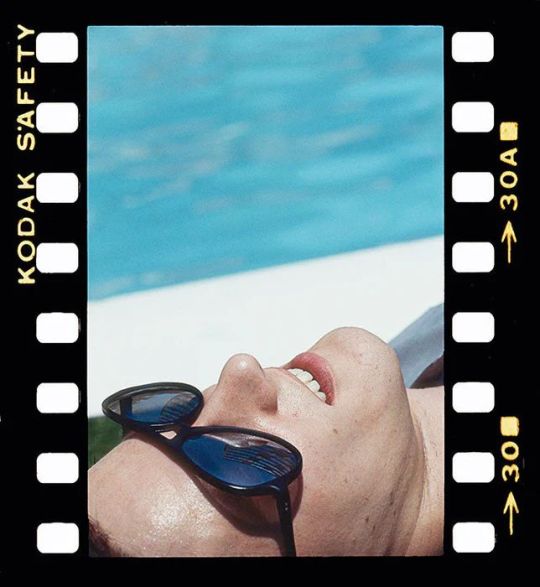
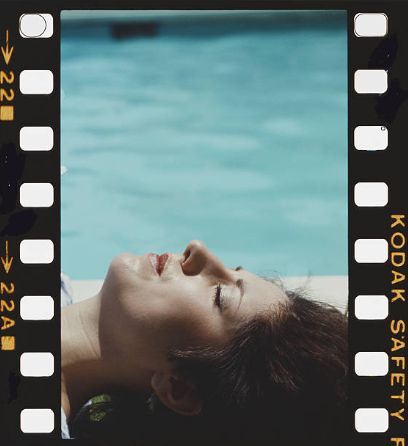

New Order's swimming pool photo shoot for a Sounds cover feature by Kevin Cummins at the Holiday Inn pool in Washington DC, on July 9, 1983, during the band's US tour.
"The band travelled to America, visiting nightclubs, bringing their new-found electronic influences to bear upon their era-defining 1983 single, “Blue Monday”. Cummins photographed them in America shortly after that release, four sunlit individual portraits against the chemical blue backdrop of a swimming pool. “I thought it would be really nice to do some pictures that echoed David Hockney,” says Cummins, and his photographs convey a bright and slightly brittle Los Angeles optimism. “We weren’t going to LA, so I used the Holiday Inn pool in Washington, DC.” “New Order were so lazy and so disinterested in having their photograph taken,” he recalls. “If you could ever suggest anything to them that meant all they had to do was lie down with their eyes closed and forget I was there, they were really into it.” thesaturdaypaper.com.au/
(via)
196 notes
·
View notes
Note
please make the bisexual Bojack Horseman video or just post a rant; I am intrigued
I have a document with six and a half thousand words of notes for that exact thing!
Making notes and a script outline for a video essay about why I think BoJack Horseman is a repressed queer man in extreme denial is actually what led me to my current research project about the history of censorship in American film. I was making notes about how, exactly, BoJack's character of "The Horse" in Horsin' Around is queer coded to hell and back, realized I was going to have to explain the Hays Code, and it all just spiraled from there.
Here's a little excerpt from my notes, just for fun:
BoJack's character in Horsin' Around was a young, single adoptive father, which definitely broke the mold of the "average" American household at the time. The average US sitcom portrays the (white) American household ideal of one mother, one father, and kids (typically at least one son and one daughter). The Horse is never shown to have a long-term love interest - the show focused entirely on him as a single bachelor. Gay men are often portrayed as ambiguously single and sexless in media, or as promiscuous, or otherwise not having long-term partnerships. The Horse is frequently referred to as a "young bachelor," which calls to mind the "confirmed bachelor" phrase - a phrase the show's creator, Herb, would have absolutely been familiar with as a gay writer in the 90s. A constant theme in the show is that BoJack models his life after television, particularly sitcoms. To BoJack, if something does not exist in television, it doesn't exist in his life. If a problem can't be fixed with television plots, it cannot be fixed. Television has an incredibly rocky relationship with queer representation, especially before the 90s, when Horsin' Around was on the air. It would make sense for BoJack to not fully realize that queerness is even a possibility for him. The painting in BoJack's office, which is consistently highlighted throughout the entire series until BoJack gives it away to P.C./Ruthie in the final season, is based on David Hockney’s “Portrait of an artist (pool with two figures)." Hockney is a gay artist. It could be coincidence, but the symbolism of the painting is wound deeply into the symbolism of the show, and it's hard for me as an audience member to believe the writers would tie a piece of art that closely to their main character without knowing that the artist was gay. That's not to say that a gay man's art can only be appreciated by a gay viewer, but having BoJack associated with a painting that depicts a gay man is significant. The painting is so significant to the symbolism of the show that its inclusion is even referenced on the Wikipedia page for the real-life painting.
119 notes
·
View notes
Text
When Harry Styles Met David Hockney: An Exclusive First Look At A Special New Portrait
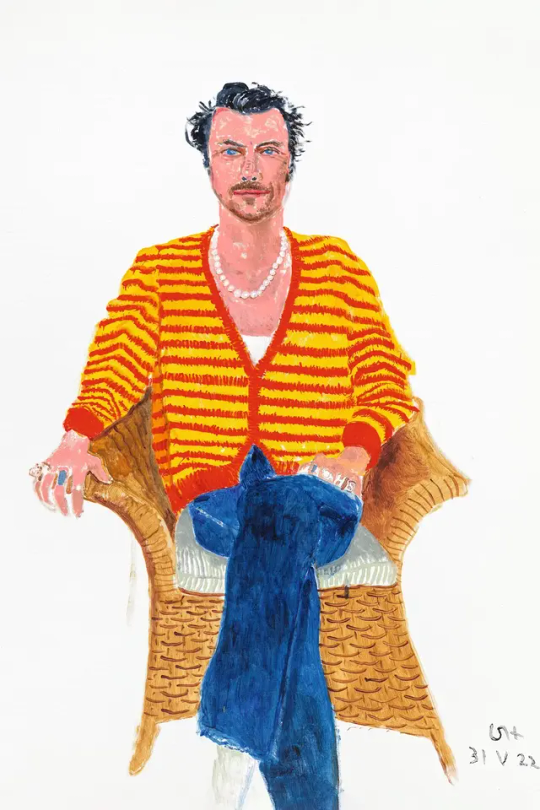
A legendary painter and a pop lodestar? Sparks were inevitable. David Hockney and Harry Styles share a very special sitting with Liam Hess
What’s the secret to a great portrait? At 86 years old, David Hockney has a few ideas. A lifetime of looking has taught him to always start with the face. “I begin with the head first,” he says, matter-of-factly, from his home in France. “From there, I place everything else.”
That was his approach when, late last May, Harry Styles travelled to his light-filled studio in Normandy and stationed himself on a cane chair, ready to become the esteemed artist’s latest subject. Over two days, Hockney worked to capture the exact hues of red and yellow in Styles’s striped cardigan, the indigo of his jeans, the string of pearls at his neck – not to mention the unmistakable tousled fringe of one of the world’s biggest pop stars. For the artist, though, the goal was merely to capture the essence of the person in front of him. “I wasn’t really aware of his celebrity then,” Hockney says, with a shrug. “He was just another person who came to the studio.”
The pair struck up an instant rapport that was likely helped by Styles being a full-on fanboy. For his US Vogue cover shoot in 2020, Styles wore a pair of hand-painted Bode cords that featured a talismanic illustration of Hockney by artist Aayushia Khowala. It’s also hard to imagine the wide-eyed wonder of a flamboyant Brit discovering the sunny thrills and spills of California – a theme, and sound, that has permeated the former One Direction singer’s solo albums – without Hockney as a precedent. “David Hockney has been reinventing the way we look at the world for decades,” says Styles. “It was a complete privilege to be painted by him.”
The unveiling of the portrait kicks off the second iteration of the National Portrait Gallery’s Hockney exhibition Drawing From Life, which first opened in February 2020, only to close weeks later due to the pandemic. With the addition of a new room of pictures charting Hockney’s creative impulses throughout lockdown, the show returns on 2 November – a few months after a refurbishment of the entire museum – with Styles’s portrait as its crown jewel. “The whole world shut down, and the exhibition was still sitting there, in the dark,” recalls Sarah Howgate, the gallery’s senior curator of contemporary collections, who oversaw the exhibition in both phases. “So it’s nice to know it will have another life.”
The Styles painting may bring star wattage, but the unassuming genius of Hockney’s portraiture is still the main exhibition draw. What makes his images tick, you quickly learn, is their honesty: whether in the tension bubbling beneath the surface of his famed double portrait of Ossie Clark and Celia Birtwell, painted between 1970 and ’71, or the seated figures that populated his 2016 Royal Academy of Arts exhibition, which included the likes of his own sister, Margaret, and the late comedian Barry Humphries. Hockney’s eye for the human figure may be playful, often kaleidoscopic, sometimes fantastical – but it’s always, most importantly, frank.
Styles’s portrait will hang alongside those of writer Gregory Evans, Hockney’s printer Maurice Payne, the mayor of his local town Dozulé, his gardener and even his chiropodist, or in Hockney’s words, “the dandy who cuts my toenails” .
One of his more recent subjects was the eminent music producer Clive Davis, who first suggested inviting Styles to swing by. “Clive told me about Harry’s new album, and JP [Hockney’s studio assistant] sent Harry a note and asked him if he’d like to come to my studio and sit for his portrait,” Hockney remembers. “He replied straight away and said, yes, he’d love to.” From there, Hockney’s process of painting Styles was instinctive. “Everybody just came to sit,” he says, breezily, before admitting: “Now I know Harry’s a celebrity, though: I’ve seen all his music videos.”
“He’s not a traditional portrait painter,” says Howgate. Hockney’s interest is not in what people do, but rather in who they are. “He’s not interested in fame. He’s interested in depicting people and their relationships.” It’s why his eye is primarily trained on his inner circle these days – but it also pays testament to his enduring curiosity that he’s still willing to open that up to a newcomer every so often. Styles seems to know how lucky he is, adding, with a tinge of disbelief: “I’m in awe of the man with enough one-liners for a lifetime.” As to what those one-liners might be? Styles and Hockney’s mutual silence on that question suggests that what happens in the studio, stays in the studio.
via vogue.co.uk
137 notes
·
View notes
Text


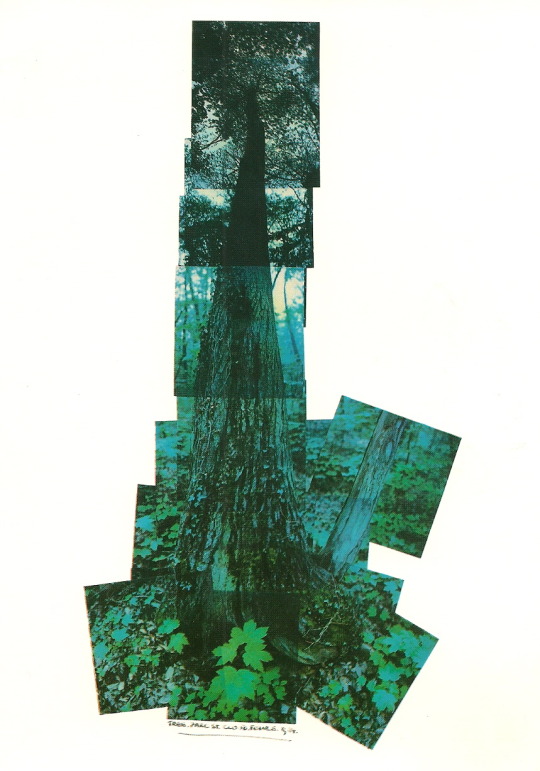
David Sylvian - Perspectives (Polaroids 82-84)
”In the early part of 1982 I had, for numerous reasons, decided to take a rest from songwriting. This was to be the first break I had had since I’d started as a child at the age of 12. It was therefore not surprising that to relieve the subsequent frustration caused by this action, I turned to the only other creative outlet I’d known, and which had been my main preoccupation until my discovery of music, drawing.
The freshness brought on by this change, the naive pleasure of working and learning in a virtually unexplored area for me opened many doors.
Not least of which being my new found appreciation of the world of the arts. Drawings, paintings, sculpture, ceramics, a universe of creativity which had always been hidden from me, suddenly came to life. I had of course been aware of works by various famous artists before, but although I was able to appreciate a lot of what I had inadvertently seen, I had never felt anything emotionally from the work in the way that I could quite naturally feel from music.
Now all was changed. I first realised this whilst visiting a major exhibition by a painter living and working here in England, Frank Auerbach. The depth and intensity of emotion I experienced surpassed anything I had felt in music for a very long time, if at all. I explain this because through these and various other similar experiences my outlook on life and work changed (or maybe matured would be more appropriate) at quite a dramatic pace. In the midst of these changes came my first attempts at Polaroid montage.
It was during a visit to Hong Kong, one of the stops towards the end of a rather lengthy tour, that I first started working with Polaroid film. As was my routine throughout the tour, I would return to my hotel after the day’s performance and there I would stay for the remainder of the evening, reading and drawing sketches. On our arrival in Hong Kong we found ourselves with a day free. However, having been there fairly recently, and not having particularly enjoyed the place, I decided to spend the day at the hotel, and among other things write some letters and complete some rawings. By evening, having filled all the paper space available with notes and sketches and wishing to continue working on ideas formed while drawing, I turned to the only materials available to me at that time, the Polaroids. This is how it started and so it has continued since, constantly developing, trying to find different uses for the same materials, and when a new technique shows itself using it to the advantage of creating interesting photographs/pictures. I feel I must point out that although looking back I know there were other artists working with Polaroids in the same, or similar areas as myself (most notable of these being D. Hockney), at this time (the remaining months of ’82) I was working totally by means of self-discovery as I had no other possible guides. I gradually became more aware of the work of others towards the middle of ’83. Sometimes consciously (and I hope with humour) I place references in my work to that of others.
Prior to my work with the SX-70, my interest in photography was to be found in areas of concept and design. I never intended or expected to become personally involved in photography, indeed even now my knowledge of the practical side of the art is extremely limited. For this reason and also because of the nature of the work I do, I would not begin to think of myself as a photographer. I have far too much respect for the people who spend a large part of their lives working with the camera (Brassai, Kertesz, Riboud, Benton, McBean and Ray) and who give true meaning to the word.
I do not see the work in this book as an end in itself. Essentially I believe that there are only a handful of pictures I have produced which transcend the techniques used and show a possibility of standing up to time. The remainder are either very personal pictures and ‘or show and explore germs of ideas which may be followed up in the future by work in other mediums.
My experimenting with Polaroids is about at an end. Although I’m still working with the techniques I’ve developed in an attempt to produce pictures of a more lasting quality. I’ll soon be turning my interests to new areas, using, along with new ideas, the more valuable I have learnt from working with Polaroids."
47 notes
·
View notes
Text
Moz Solo was already on it @lovely-lady-fox! FamousWhenDead posted the whole thing:
Johnny Marr: How could Meryl Streep agree to be in Mamma Mia?
The guitarist lets us into his cultural life, from his love of David Hockney to making his friends watch a Joan Didion documentary
My favourite piece of music For a long time now, it’s been My Goal’s Beyond by John McLaughlin. Like his work with the Mahavishnu Orchestra, it is in a genre entirely of its own. It’s unquantifiable and makes me feel a certain way, no matter what happens in the outside world.
The lyric I wish I’d written “You’re going to reap just what you sow”, from Perfect Day by Lou Reed.
The instrument I wish I’d learnt Piano. I can play it, but only in amateurish fashion. I should say though there are guitar players who play the piano nicely like Neil Young, Paul McCartney and David Bowie. They play it as a means to an end and do wonderful things with it. But I would like to be a few levels up from there.
The music that cheers me up Any good pop music, which by definition usually means contemporary. There are things from my past that of course make me feel good. But there’s something about hearing music that’s fresh, upbeat and represents the modern world — it makes you feel that everything is OK.
I’m having a fantasy dinner party, I’ll invite these artists and authors Gary Oldman, Muhammad Ali and certainly Marilyn Monroe.
And I’ll put on this music Spirit Power: The Best of Johnny Marr.
Overrated I don’t tend to like shitting on people, but Mamma Mia!, for God’s sake, or We Will Rock You or any of those sorts of musicals. How did it get to that? We’re supposed to go along with the idea that they’re good. What was Meryl Streep thinking she was doing starring in that film, and Julie Walters? What were they thinking? There are a lot of things culturally that we’ve just gone along with and they really must stop.
Underrated
Blindboy Boatclub, the artist and musician from Limerick, is best known as one half of the Irish comedy hip-hop group the Rubberbandits. He’s amazing, has such an interesting way of thinking and also hosts the brilliant series The Blindboy Podcast too. One of the best books I have ever read is his Topographia Hibernica. I can’t recommend him or it enough.
My favourite author
Aldous Huxley. People would assume I’m thinking about Brave New World orThe Doors of Perception, but I’m actually referring to his work after he moved to the United States in the second half of his life. His essays and lectures are even better than his earlier work. I rediscovered him in the Nineties and he is my actual hero. Everything you read of his is an education.
The book I’m reading
Autobiography of Red by Anne Carson. It’s a trip, moving around from style to style. The novel is loosely based on Greek mythology, but set in modern times. It’s relatable and super interesting. PJ Harvey introduced me to Carson, an intriguing cross between an essayist and a poet.
The book I couldn’t finish
The Perennial Philosophy by Aldous Huxley. Just couldn’t do it.
The book I’m ashamed I haven’t read Ulysses by James Joyce. It just sounds so hard going. I love the idea of it and feel genuinely bad that I haven’t read it, but I do also feel like I know so much about it already. I admire it enough, without feeling the need to put myself through the hassle of reading it.
My favourite film Sergio Leone’s film Once Upon a Time in America. When it was first released, I went to see it a few times and decided then it was the best thing I’d ever seen. I recently saw The End We Start From, starring Jodie Comer. It’s so good. Amazingly, I came away from it with this feeling of triumph of the human spirit. It says a lot about what it means to be human and what we fundamentally need, which is compassion, connection, love and understanding. And Comer is just so believable in the role.
The box set I’m hooked on I’m rewatching Nurse Jackie. There’s so much good stuff out there that whenever I occasionally revisit old, great stuff, you forget how much it stands up. I like anything Edie Falco is in. I also have just rewatched the documentary Joan Didion: The Center Will Not Hold. I’ve watched it at least three times and whenever someone comes to my place that hasn’t watched it, I watch it with them.
My favourite TV series It has to be Mad Men. One of my friends is eagle-eyed and noticed that when they put an album on a turntable, it has the correct label from the Sixties. That’s crazy.
The film I walked out on
There are loads, often stuff I take my kids to see and they don’t even notice I’d left. I didn’t enjoy Baby Driver — I didn’t like the music in that at all.
I wasted an evening watching Manchester City play in the Champions League final in 2021.
The last movie that made me cry These days I can cry at almost anything so I can’t remember.
The place I feel happiest Running around Brooklyn, over the Williamsburg Bridge. Or around Portland, Oregon. Whenever I’m at those places, I always run unless I’m injured. I’ve done a lot of things in my life, but nothing quite beats that.
My guiltiest cultural pleasure Cheese and onion pasty, chips and peas. Anybody who says that’s not a culture doesn’t know what they are talking about.
If I could own one painting it would be We Two Boys Together Clinging by David Hockney. Any of his work would be a dream to own. Even the iPad stuff is beautiful. I went to see David Hockney: Bigger and Closer at the Lightroom and it was great.
FamousWhenDead's post of the article
#johnny marr#These days i can cry at almost anything my God johnny just rip my heart out gosh#Sweet soft boy just out here being a part time Philosophy major#johnny
16 notes
·
View notes